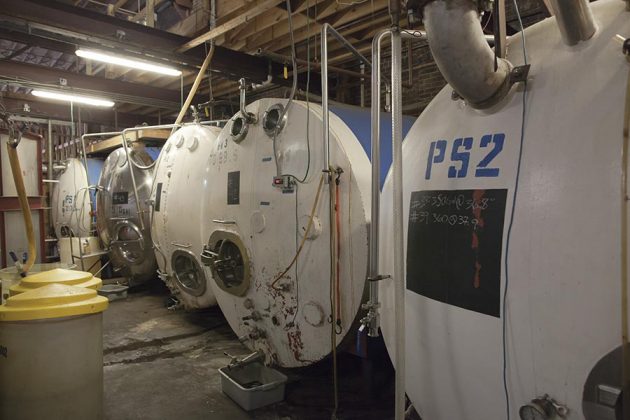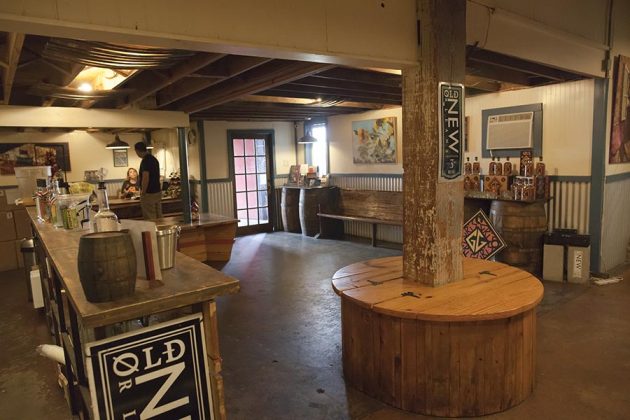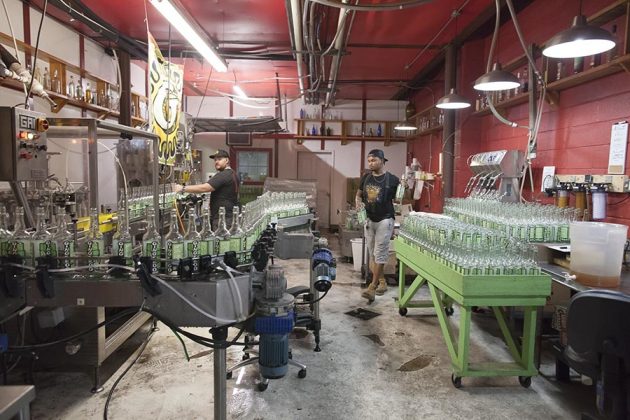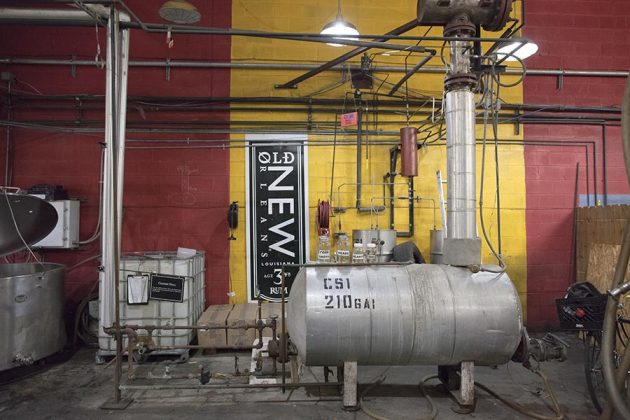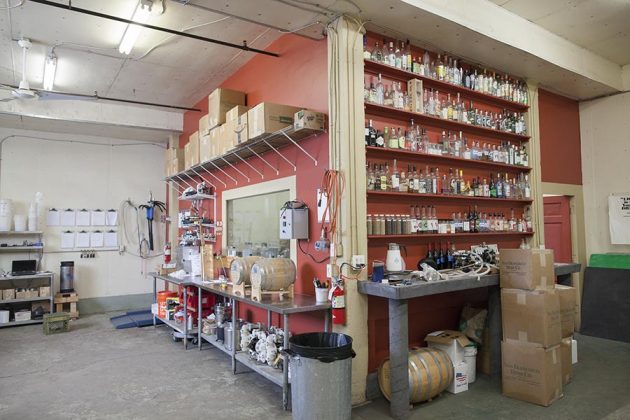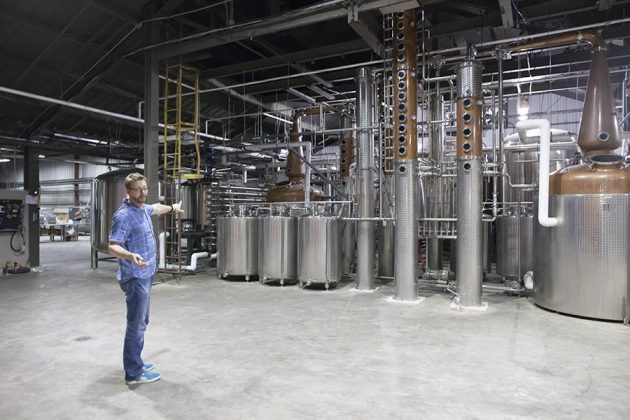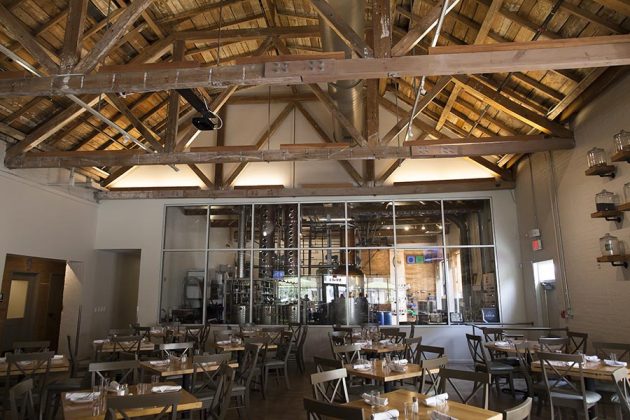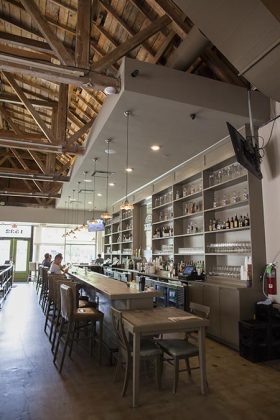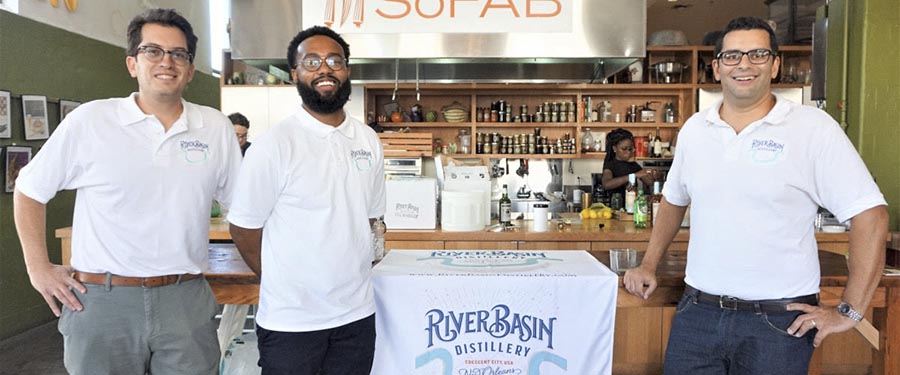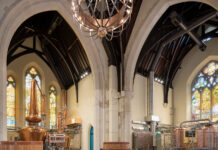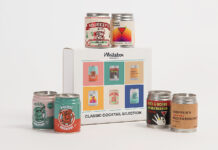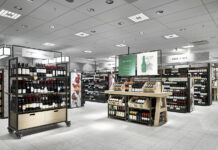Let’s back up the van. If you were reading this article, say five years ago, it would be an entirely different story. In fact, I did write a piece about New Orleans’ fledgling distillery scene the summer of 2016. To be honest, it may have been a stretch then to have called it a scene.
At that point, there were few operational players in the game, and aside from Celebration Distillation, makers of Old New Orleans Rum, none older than a few years. But plans were afoot. In several cases, spaces had been bought or leased, though were not yet operational. In them, a spate of soon-to-be owners bit their nails as they waited for custom, break-the-bank stills to arrive at port. There was a nervy excitement of something big about to unfold — a bit like witnessing expectant fathers pacing outside the delivery room.
To the outsider, the fact that New Orleans wasn’t already chock-full of established distilleries by 2016 seems counterintuitive. After all, how could it be that the home of the Sazerac, the Ramos Gin Fizz, the Vieux Carré and the Hurricane, the go-cup and ground zero for the spirits industry’s largest event, Tales of the Cocktail, a city with a driving tourist trade and arguably the highest density of bars per American — how could New Orleans not supply its own demand for spirits?
Add to this that when it comes to raw ingredients, Louisiana is a distiller’s paradise, home to eleven raw sugar factories and second only to Florida in sugarcane production. Celebration Distillation’s molasses, for example, comes from a plant only a one-hour drive from its New Orleans distillery. Louisiana is also the nation’s third-highest rice producer, a boon for those looking to produce alternative vodkas and gins.
With so many advantages, the city’s longtime dearth of distilleries seemed an economic conundrum — indeed, even madness. But then again, this is New Orleans, where one learns to live with a certain latitude when it comes to logic.
Fortunately social, economic and legislative changes have all combined to put New Orleans at the center of a vibrant and growing distilling movement, one eager to work all the angles and perched to position the Crescent City as one of the nation’s foremost destinations for craft spirits.
Destination Distillation
“The trend here is growth. New Orleans is seeing a lot of activity, with new distilleries opening every year,” says Katie Darling, president of the Louisiana Distiller’s Guild and CEO of Celebration Distillation, the country’s oldest continually operated rum distillery. By Darling’s count, the Crescent City is now home to 11 distilleries. “Is there enough shelf space for more? Absolutely.”
Darling says she’d like to see a reversal of the current market model favoring corporate brands: “Instead of seven corporate options and one craft label, we’re looking to see the opposite.”
Though Darling notes that there have also been a few closures and that craft spirits is “a very competitive industry,” she still sees opportunities for more microdistilleries, given the city’s robust tourist trade — especially when it comes to rum. Inspired by Kentucky’s model of distillation tourism, she and other Louisiana producers are currently at work with the governor’s office in developing a rum trail.
Indeed, Celebration already does a robust tour trade, despite its off-the-radar coordinates outside the French Quarter. In peak season, the microdistillery conducts 20 tours a week with as many as 1,000 visitors to its repurposed dairy-tank pot stills and bottle shop. And while tour purchases represent only a minority of Celebration’s sales, this personal connection is key when it comes to generating product awareness and loyalty to the Old New Orleans Rum label.
Wettest City on Earth
There’s an irony to the fact that the 18th Amendment effectively wiped out Louisiana’s once plentiful distilleries for so long; after all, the state, and thirsty New Orleans in particular, barely gave Prohibition a passing glance. Federal agent Izzy Einstein dubbed New Orleans the “wettest city on earth” after supposedly arriving in the city and asking his cabbie to take him to the nearest spot for a drink, only to have the driver offer a sip from the flask beneath his seat. Einstein clocked the exchange at 35 seconds.
Yet like its once-thriving brewery industry, New Orleans stills didn’t return. It’s telling that Celebration Distillation, founded in 1995 by local artist James Michalopoulos, is the state’s longest continually operated distillery; the Louisiana Distillers Guild is even more recent, having been founded only two years ago. The long lapse may be in part explained by a three-tiered system that, according to some, puts more power into the hands of distributors and retailers than manufacturers. In addition, until the passage of Louisiana Senate Bill 64 in 2012, the state effectively discouraged microdistilleries by forbidding tours or tasting room sales to individual customers. (A singular exception was made for Celebration Distillation, but then again, this is New Orleans and one learns to live…)
Post-Prohibition city zoning laws have also deterred distilleries, preventing them from operating near schools and churches, both of which abound in New Orleans’ compact and often historic neighborhoods. And then there were the dark years before craft cocktails took off or there was an established demand for artisanal spirits. As Darling sees it, the growth of New Orleans’ distilleries is more a reaction to the rising market for small-batch spirits rather than a force driving demand.
Of course, money (or lack thereof) has also played a part. Starting up even a modest distillery is capital intensive, and survival depends upon a customer base with pocketbooks that can stretch wide enough to pay for craft products — demographics that may not have been substantial enough in pre-Katrina New Orleans. Regardless of whether one sees the massive waves of development following the storm as revitalization or gentrification, there’s little doubt that New Orleans has experienced a sea change in demographics, one that includes a significant influx of urban transplants from wealthy cities like New York and Los Angeles. Finally, the city’s tourism has steadily grown over the last decade: In 2018, with a population of 425,000, New Orleans played host to a whopping 18.5 million visitors.
“Underdogs and Millionaires with a Dream”
“Those who make it here tend to be a pretty intrepid crowd,” says Jed Haas of his microdistillery Atelier Vie. Atelier is indeed off the beaten path, tucked out of sight in the Art Egg Studios, a complex of creatives located in a concrete corridor of warehouses a stone’s throw from I-10. He admits his setup is about as basic as they come: a self-made 30-gallon pot still with no bells or whistles. To date, Atelier’s “tasting room” consists of a handful of office chairs, circa 1982, circled around a scruffy coffee table within arm’s reach of Haas’ desk.
When I profiled Atelier Vie in 2016, the distillery’s lineup centered on two gins (both gold medal winners; Bon Appétit included Haas’ barrel-finished reserve in a March 2016 roundup of small-batch spirits) and two absinthes: a traditional green and Toulouse Red, whose color comes from hibiscus flowers, and the first absinthe distilled in New Orleans since the spirit was banned a century before. Now Atelier’s line boasts 10 items, including a brandy, a barley single malt, a molasses rum and a rice whiskey — the last two sourced in Louisiana.
As a New Orleans distiller (and also because Haas is Haas), Haas says he feels the push to produce exceptionally high quality goods: “The city attracts a lot of spirit experts, some self-styled and some genuine, all with opinions,” he explains. “Customers have no hesitation when it comes to letting you know exactly how they feel about your product and how it compares to others.”
Though he says the combination of plentiful tourism and bars as well as the ongoing craft cocktail trend will continue to prompt new distilleries to open in the city, he doesn’t expect all to survive the initial lean years. When asked how long it was before Atelier generated a livable wage, Haas offers a pained smile. “A while,” he shrugs. “A fact that some of these newer distillers may not realize. ‘Don’t quit your day job’ is good advice.”
Haas sold his first bottles in 2012, running Atelier as a one-man show. Now eight years in, minus a few part-time exceptions for bottling, sales and a gardener who weeds the wormwood beds critical for Atelier’s absinthes, he continues to fly solo. When not tending to the still or to paperwork, Haas is out meeting with local bar owners and directors on whose support Atelier depends. He estimates only 10% of his sales come from the tasting room, with the remaining 90% divided evenly between retail and bar accounts. Though he aims for wider distribution, nearly all Atelier’s sales remain in Louisiana.
“What you have in New Orleans are underdogs and millionaires with a dream,” he says of the current market. Unlike self-distribution states such as California and New York, Haas notes that Louisiana distillers are strictly forbidden from selling their own wares beyond on-site tasting rooms. He points to the tiny wine bar a few doors down the Art Egg hall as an absurd case in point. Though the bar stocks Atelier Vie spirits, in order to supply them, Haas must drive his product across town to his distributor only to have one of their trucks drive it back.
Not surprisingly, a good portion of Atelier’s profits go toward distributors, whose cuts, Haas notes, can be as high as retail markup. Nor can he afford to sweeten deals to retailers, like the major labels, with discounted product. Haas says the system makes it tough for small-batch distilleries, even those with self-discipline and determination, to compete against larger enterprises. “Ultimately, you have to distribute,” he says, “but on the smaller scale, it’s very difficult.”
And when it comes to smaller scale, Atelier Vie is literally running up against the constraints of its 1,000 sq. ft. digs, with stacked cases competing with aging barrels for space and no room for a desired second still. Haas’ dilemma brings up what may prove one of the most difficult obstacles when it comes to distillery expansion: zoning. Haas says he faced a gauntlet of issues from the city when attempting to launch Atelier, and while his distillery is now grandfathered in, the area surrounding the Art Egg studios has since been reclassified, with the result that Atelier can’t expand, even within the same building. Growing Atelier would necessitate finding a suitable property in an industrial section of the city or obtaining a conditional use permit — no easy feat.
For now, Haas will have to stack his cases a little higher.
“I never wanted to do a microdistillery.”
Less than a mile away on a dusty industrial stretch sits a nondescript warehouse, home to Porchjam Distilling, the city’s only commercial-scale distillery. In terms of size, Porchjam’s 25,000 sq. ft. complex plays Goliath to Atelier Vie’s David. With no tours, no tasting room, not even a sign on its front to announce itself, it’s clear Porchjam isn’t concerned with interfacing with the public. At present, its portfolio contains a single product, Bolden vodka, made from 70% malted barley and 30% red winter wheat, both sourced from Minnesota. However, given the recent purchase of a second location in sugarcane country, specifically the former Donner-Peltier distillery in Thibodaux, it’s safe to say rhum agricole is in the company’s near future.
CEO and Founder Gordon Stewart grew up in the shadow of Glasgow, Scotland’s distilleries and whiskey warehouses. Opening a distillery in his adopted hometown of New Orleans felt like a natural extension of himself. From the start, Stewart, a former brewer, was clear about scale. Rather than aim for a small-batch spirits designed to satiate local demand, Stewart set his sights on commercial manufacturing. “I saw the white space to create a national-scale distillery,” he explains. “People see New Orleans as a city of consumption, but we have a rich history of production as well; I wanted to put something on the map the city could be proud of. I never wanted to do a microdistillery, and I don’t want to be overly parochial.”
Though Stewart’s pitch to produce “honest” European-style vodka with exacting standards and no shortcuts initially met with considerable criticism from potential investors, he stuck to his instincts. “The American conception of vodka is: no flavor or aroma — something you drink to get drunk,” he says. “But that’s disingenuous to what vodka really is. I’m fond of the phrase ‘the newest memory of the grain.’ Well, vodka is the newest memory you can get.”
Porchjam completed its build-out at the end of 2016, then spent the next year and a half testing and troubleshooting systems before sending out its first batches of Bolden in summer 2018. Step past the anonymous facade and you’ll meet with an impressive custom-hybrid still with two 24-plate columns, capable of producing 70,000–75,000 cases annually, according to Stewart’s estimate. “It’s a system designed for efficiency and yield,” he says. “From my perspective, you should be able to have a system that can reach the level you want in a single pass.”
While current distribution remains centered on Louisiana, come 2020, Bolden will reach target markets in New York, California, Illinois and Florida. For Stewart, the goal isn’t to get his product everywhere but to find demographic matches for his product. “A lot of companies focus so much on production, but in the end, you still have to sell the product,” he says. “You have to know the market, and specifically where your product fits in it.” According to Porchjam’s head of operations, Jason Zeno, that business and marketing savvy is what helped lure him away from Jim Beam.
Stewart also has his eye on international exports, and although few would associate vodka with New Orleans, Stewart admits that when it comes to making professional inroads, Porchjam’s address is an advantage: “No matter where you go in the world, New Orleans is immediately recognizable. The city evokes response.”
Distillery Meets Restaurant: Built-in clientele
Ideally located to take advantage of heavily touristed St. Charles Avenue, Lula Distillery is Louisiana’s first restaurant/microdistillery, a special designation legal only since summer of 2015 when the state legislature passed House Bill 233 — the result of lobbying efforts by Lula’s founding partners, Cordon Blue-trained chef Jess Bourgeois and entrepreneur Bear Caffery.
When I first visited Lula in the spring of 2016, the space was a whopping 10,000 square feet of empty. Even then it was clear the bones were good: soaring ceilings and concrete floors, with windows overlooking the world-famous St. Charles streetcar line. Then Bourgeois could only vaguely gesture at the coming vision: kitchen here, long bar there, event space over there, etc. The proposed design called for a glass, floor-to-ceiling wall separating the dining area from the equipment: two 3,000-liter CARL fermenters and a 1,450-liter pot still with two 10-plate rectification columns. Lula opened in February 2017, just in time to take advantage of the Mardi Gras parades that roll outside its windows.
Though Caffery had done a fair amount of brewing, neither he nor Bourgeois were expert distillers before coming to the project, and they have since hired Rocky Tingler as head distiller. In addition to producing only gluten-free (Caffery has been diagnosed with celiac disease), Lula sources in-state; indeed the distillery gets its name from the Belle Rose, Louisiana, sugar mill that supplies the cane and molasses for its rum and granulated sugar for its vodka and gin. For Bourgeois, who grew up just a few miles down the road, sourcing from the mill is more than just about going local — it’s deeply personal as well. At present, Lula is one year in the barrel toward its goal of offering an aged-rum program.
To Bourgeois’ knowledge, Lula remains Louisiana’s only restaurant/microdistillery. Having worked in restaurants since college, he says the choice to go hybrid was motivated by experience and a desire to diversify. “I just felt more comfortable not going all-in only on the liquor,” he explains. “It can be intimidating to walk down the aisles of a liquor store and see all the labels trying to peddle what is essentially the same product.”
Of course, the hybrid model comes with certain drawbacks: larger space requirements, startup costs for two businesses and, once open, the need to oversee both at once. Lula’s special designation also means it’s prohibited from selling its spirits retail or wholesale, with all sales coming from drinks poured on-site.
Even so, with no distributor, all profit stays in-house, and the restaurant and bar provide a built-in clientele. Bourgeois says he also values the sheer quantity of human interaction the bar and restaurant afford Lula’s spirits. “We see a lot of customers who taste our product face-to-face, right at the bar,” he says. Like Haas, Bourgeois finds New Orleans customers don’t hold back when it comes to voicing opinions; while at times prickly, that feedback has allowed Lula to tailor its spirits to better match customer preferences for “a really clean” palate. “We’ve been manipulating our product to suit customers’ tastes from month to month,” he comments. That said, Lula’s shelves are stocked with competing major labels of rum, vodka and gin for those who won’t drink off-brand. “We’re very proud of our product,” Bourgeois says, “but the reality is not everybody is going to be head over heels with what we do.”
For purists, Lula Restaurant Distillery may seem more about food than spirits, but given the success of brewpubs and a city that loves to eat as much as it drinks, it’s probably only a matter of time before Lula isn’t the only hybrid in town.
Going Local, Sourcing Elsewhere
As a label, New Orleans sells. Mostly that has to do with perception of the city’s authenticity; it’s a word we hear over and over. Both insiders and outsiders want the “real” New Orleans; the more local, the better. The desire for cultural heritage extends to spirits, something newest kid on the block River Basin Distillery is keen to leverage. Last July, co-founders Elliott Wiener, John Suarez and Andrew Albert released their first batches of “hand-finished” rye whiskey. Despite sweltering temperatures and a stiff 94 proof, River Basin quickly landed accounts with a slew of local bars and retailers.
Wiener describes River Basin as “the city’s first rye since Prohibition.” The distillery’s New Orleans location is key to the brand’s identity and figures prominently on its label. For Wiener, Suarez and Albert, that connection is more than just talk. All are locals, and the distillery donates a portion of its proceeds to a wetlands preservationist group, the Coalition to Restore Coastal Louisiana.
What’s interesting about River Basin is how it has capitalized on rye’s association with New Orleans, not because the whiskey was ever distilled there (it wasn’t), but because the spirit came to New Orleans as part of the Mississippi riverboat trade, eventually finding its way into multiple local cocktails, such as the Sazerac and the Vieux Carré. According to Wiener, the city was the nation’s largest whiskey market in the 1800s.
Unlike the other labels mentioned here, River Basin doesn’t produce its own distillates but, as their site says, sources “up the river,” much as rye would have been produced in the 19th century. (For the record, River Basin’s distillates don’t arrive via steamboat but by train and truck.) Proofing and aging happen in the trio’s facility near the Superdome — a warehouse they hope one day will serve as a tasting room and perhaps even for manufacturing on-site. Following tradition, the whiskey is aged in charred, new American white oak barrels.
While purists may take umbrage at co-producers and co-packers who call themselves distillers, it’s a sign of the times that the model has arrived in New Orleans. For Weiner, who describes River Basin as “three young guys with a dream,” co-producing allowed River Basin to launch without the kind of capital and equipment on-site production requires. “Co-producing was the most viable option of getting us to a point of putting product on the shelves,” he says. Another benefit is control. Without the need for outside investment, Wiener explains, River Basin remains entirely owned by its three founders, thereby keeping total control over their products’ taste and quality, even the company’s commitment to charity.
When asked if the city can absorb more distilleries, Wiener, like Darling, is quick to say yes for the simple reason that New Orleans follows its own rules when it comes to consumption. “We over-index when it comes to restaurant and bars,” he says. “Our citizenry loves an experiential lifestyle. That vibrancy means we’re able to support each other. We have this amazing universe here.”

